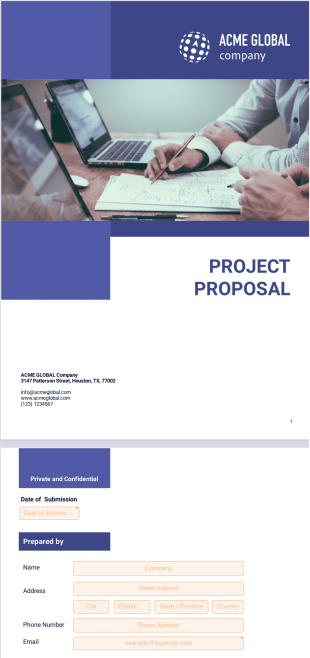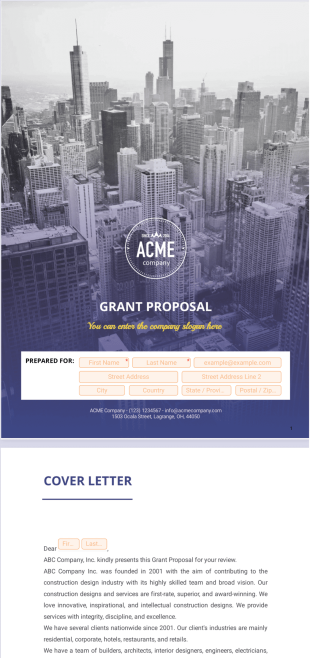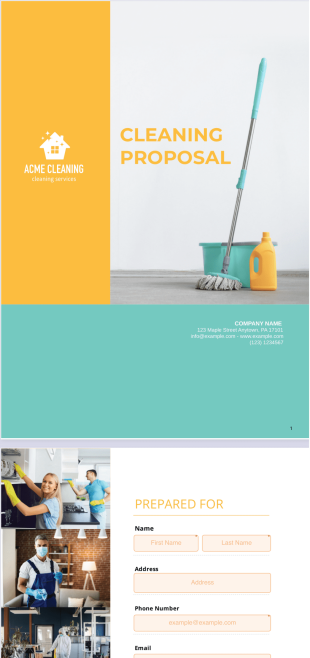Budget Proposal FAQs
1) What types of costs should be part of a budget proposal?
A budget proposal details all of an organization's expected revenue and expenses for a specific period. A budget proposal divides the costs into direct and indirect expenses, providing an easy way to compare categories.
- Direct costs: These are costs that are directly associated with a product, project, or department for the proposed operation. Direct costs often include expenses in these categories:
- Labor: This includes the salaries, wages, and benefits for employees directly working on a specific project or task.
- Software: This includes any software purchases or development necessary for the proposed project.
- Rental fees: Rental expenses directly associated with the project are a direct cost. Rental fees for vehicles, event spaces, and project-specific equipment are some examples of these costs.
- Indirect costs: These costs aren't directly linked to a specific project or department, but they’re necessary for running the overall operation. Indirect costs are generally fixed and apply to the business as a whole. Indirect costs often include expenses in these categories:
- Utilities: These expenses include the costs of services such as electricity, water, and internet the company uses to conduct business.
- Insurance: This includes the premiums paid for policies that cover the overall business operations.
- Tax: This category includes taxes associated with the overall business operations.
2) What are the benefits of using a budget proposal template?
A budget proposal template offers a clear, predefined format to use to create a proposal, including all projected revenue, costs, and profits. It provides an easy way to document expected income and expenses, enabling stakeholders to better understand the allocation of resources. It’s also helpful for evaluating a project's value and impact. By outlining and comparing anticipated costs versus projected outcomes, you can better assess whether a project aligns with your strategic goals.
Plus, a template helps you evaluate and identify cost efficiencies. By systematically documenting all costs, you can easily spot areas for potential savings or investment, enabling strategic decisions for optimal resource utilization. This systematic approach also ensures accurate profit forecasting, and it makes it easier to compare potential projects or a project's proposed budget vs its actual performance.
3) What are the steps of writing a budget proposal?
Using an established process to write your proposal will help you ensure that you’ve included all necessary components and accurately represented them. Here's a brief breakdown of the steps of writing a budget proposal:
- Describe the objectives: Start by clearly defining the purpose or goals of your budget proposal, such as funding for a specific project, department, or business operation. These objectives should align with the organization's strategic goals and be specific, measurable, achievable, relevant, and time-bound (SMART).
- Summarize items: Identify and briefly describe all the resources necessary to achieve the stated objectives. Include tangible and intangible resources such as personnel, equipment, software, training, or services.
- Detail the costs: After outlining the necessary resources, you'll need to estimate the associated costs, including direct and indirect costs.
- Summarize costs: After detailing all costs, provide a comprehensive summary. This summary should categorize the expenses and present the total projected expenditure. It should be clear and straightforward, allowing stakeholders to grasp the total financial implications of the budget proposal quickly.
- Sign the proposal: Once all details are complete, the appropriate stakeholders need to sign the proposal. Depending on the organization's policies, this process might require signatures from the person preparing the budget, department heads, or even upper management.
- Submit the proposal for approval: The final step is to submit the budget proposal to the appropriate authority for review and approval — possibly a manager, a board of directors, or a specific committee in charge of financial decisions.
4) In which areas are budget proposals used?
A budget proposal is a versatile tool used across many organizational areas, each with unique financial considerations. Here are a few:
- Research: The proposal outlines the funds needed to carry out a study or project, which is crucial for showing the feasibility of a study and securing funding.
- Marketing: A budget proposal details the costs associated with campaigns, advertising, market research, public relations, etc. It can be instrumental in allocating resources effectively and tracking return on investment.
- Organization: Organizations often use budget proposals to plan and control an entire business's income and expenditures, helping align financial resources with strategic goals, cash flow, and performance tracking.
- Fundraising: A budget proposal outlines the costs associated with fundraising activities as well as their potential income. This document helps stakeholders evaluate the efficiency of different fundraising strategies and provides transparency to donors about how the organization is using their funds.
- Project management: Budget proposals can help with resource allocation and planning by estimating the costs associated with completing a specific project, which can impact whether leadership considers a project worthwhile.






